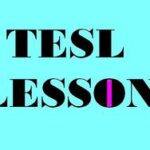What is Strategic Reading?
In this article, you will find out why strategic reading is so important and what you can do to implement it in your ESL classroom.
In the ESL classroom, what and how to read go hand go hand in hand. Strategic Reading is helping the student to comprehend what he or she is about to read by offering a plethora of pre-while-post reading strategies to the student.
Why Strategic Reading?
Reading is an extremely complex activity and one of the most important skills in language learning. There are different levels to reading and so many different factors are involved facilitating actual comprehension. Authentic reading comprehension implies deep understanding, ability to infer, analyze, apply and evaluate. It is important for ESL pupils therefore to know how to read and to be able to deal with a text independently.
What makes teaching Strategic Reading problematic?
Many of the skills teachers have to teach the kids in English as a Second Language are skills they have not acquired in their own language in terms of paragraphing, summarizing, paraphrasing, finding the main idea, supporting details, the list goes on. Yet, teachers are required to do this in a second language even to kids who are weak. Many of the skills require a deep cognitive awareness which some students don’t have.
Many times some of the questions which are asked in exams test higher cognitive ability and not English ability. This leads to frustration both on the part of the teacher and the pupils.
What you can Do as an ESL/EFL Teacher
1.When planning, take into account the specific learner.The weaker the learner the more the teacher must break down the process into “digestible” pieces. I still feel that the biggest challenge is to train our pupils to read critically especially during reading.I feel that even my strong pupils find this difficult.
2.Reading should be purposeful. Pupils should have a clear purpose in reading, whether it is to find a relationship between a paragraph, to find a connector, to find the big picture of the text, to complete an authentic, meaningful task, etc. Purposeful reading, while reading is what teachers should be getting at.
3.Students have to know why they read-first, in a structured and guided way.Example: reading together short chunks of the text-paragraphs. Also, while stating the purpose for reading, it is important to ask questions which “hit” the text meanings. Another advantage of reading short chunks of the text together is that it turns into some sort of interaction, allowing a teacher to model thinking alouds and corresponding reading strategies so even weaker students can follow and participate in the class interaction. Even better if the text relates to them and they are genuinely interested in reading it.
Final Words
1.Remember, not every strategy is suited for everyone ESL teachers can’t possibly use everything that’s suitable in one class / week / month / term / year.
2.Practice one strategy at once applicable to very simple texts, then, it will work out.
3.Spend an appropriate and reasonable amount of time.
4.Review, Repeat and review again! Don’t assume that because you have taught it once, that the students remember them. They need tons of recycled deliberate practice that is not at one go.




